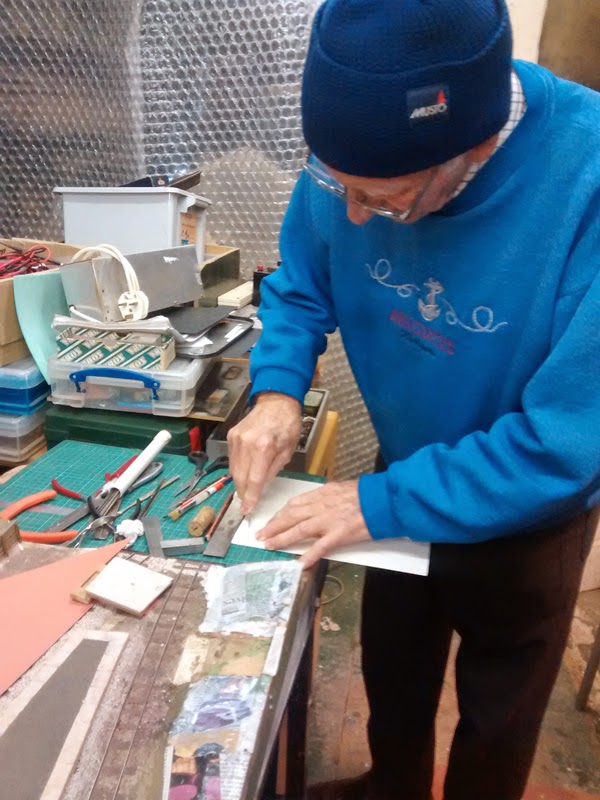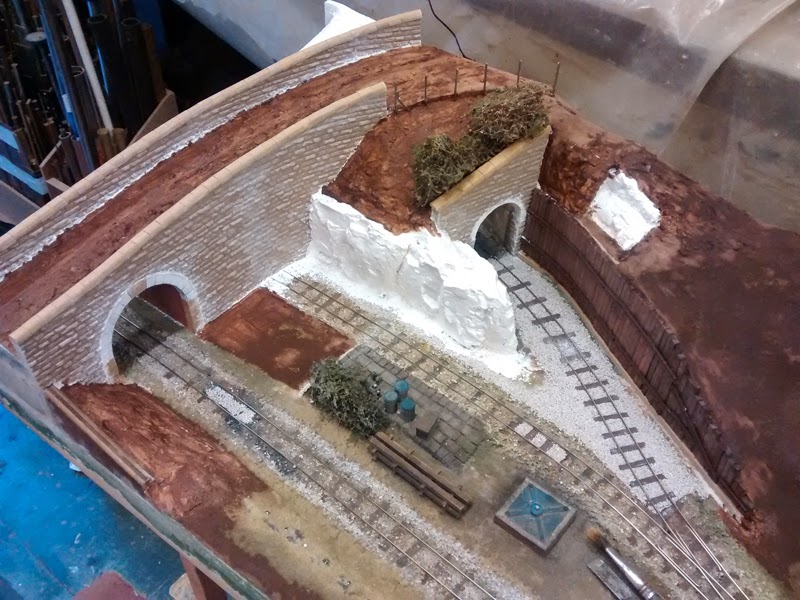Laurence - progress refuelling area (coal and water)
Geoff - progress stair dwarf walls
Stephen - paint bare plaster around bridge area
ALL - develop the generator building
Firstly, the rough ground and foam inserts along the refuelling area were covered in layers of newspaper and diluted white glue. The balsa wood coaling stage was given a coat of grey paint to cover the wood stain that clearly hadn't worked. This will further be weathered and detailed.
L is forming paving slabs to cover the plywood water-tower base. He has already refurbished the tank supply pipework, including a new globe valve, but we won't let him install it yet, for fear of getting damaged. Another 'fitting' session is being pencilled-in for when the area is complete.
A triangular piece of foam was fixed into place to create the 'ground beyond the road', and an extra few millimetres of tunnel. Once the plaster covering has dried out, it will be painted ready to receive a mass of bushes and undergrowth.
Meanwhile, Geoff persisted with his own self-inflicted torture - filing bull-noses on the dwarf brick walls up to the water tank and reinstating the mortar joints. When the conversation veered towards the generator room, this labour of love was dropped like a ton of bricks!
After a few minutes verbally developing a viable plan for the generator room, paper was produced and Geoff's ideas were sketched out. Stephen, in 'work mode', started quizzing on equipment dimensions, clearances, connections, adjacencies and declared that the room wasn't big enough. We needed more room for batteries and some form of lobby was required (maintenance in the rain?), so we decided that an extension was required. More sketches and discussions led to a basic scheme that Stephen would develop.
 |
| Basic plan with dimensions |
 |
| Generator (with battery rack upside-down in corner!) |
 |
| The Control Panel |
 |
| The extension and 'great window'. |
A Tangye single cylinder gas fired engine. Geoff proposes one with two flywheels, one of which will drive the generator (below).
The control panel is a slab of slate on a metal frame, onto which, the various components are mounted.
The lead-acid, 2.5v batteries on their steel frames.
Stephen produced and circulated some drawing options, which triggered further considerations regarding battery provisions/layout, working voltage, room ventilation etc. which resulted in a 'final' set of drawings. The key feature is the extension added to the front, to provide a suitable personnel door, battery space and general working area. The building will also be lifted on a brick plinth to make alignment of the flue from the gasifier to the processing plant outside. The opening on the track-side of the generator room will have a large window that will afford views of Geoff's working engine and pristine room details.










